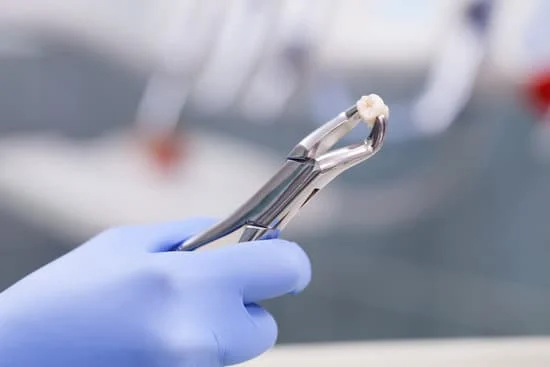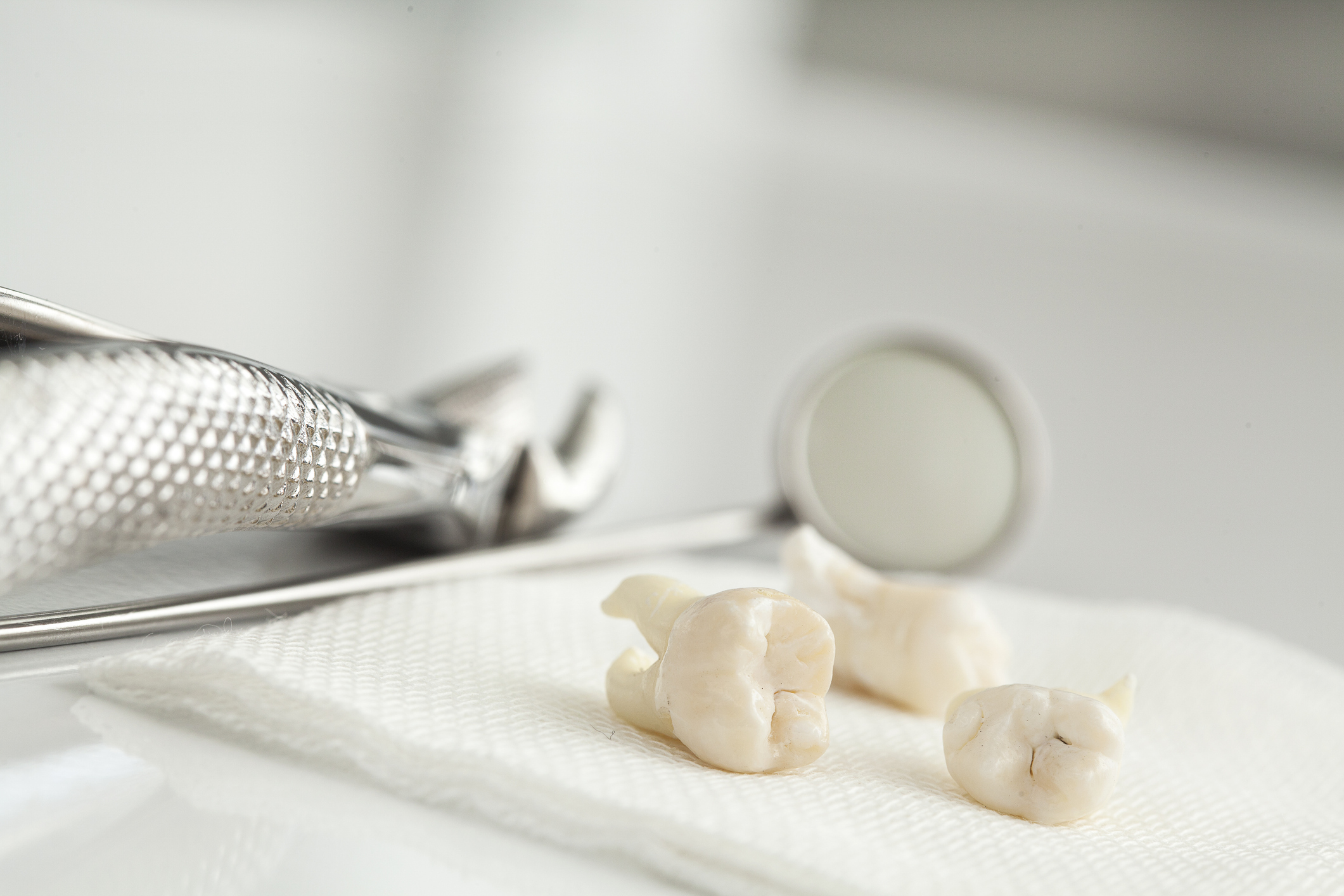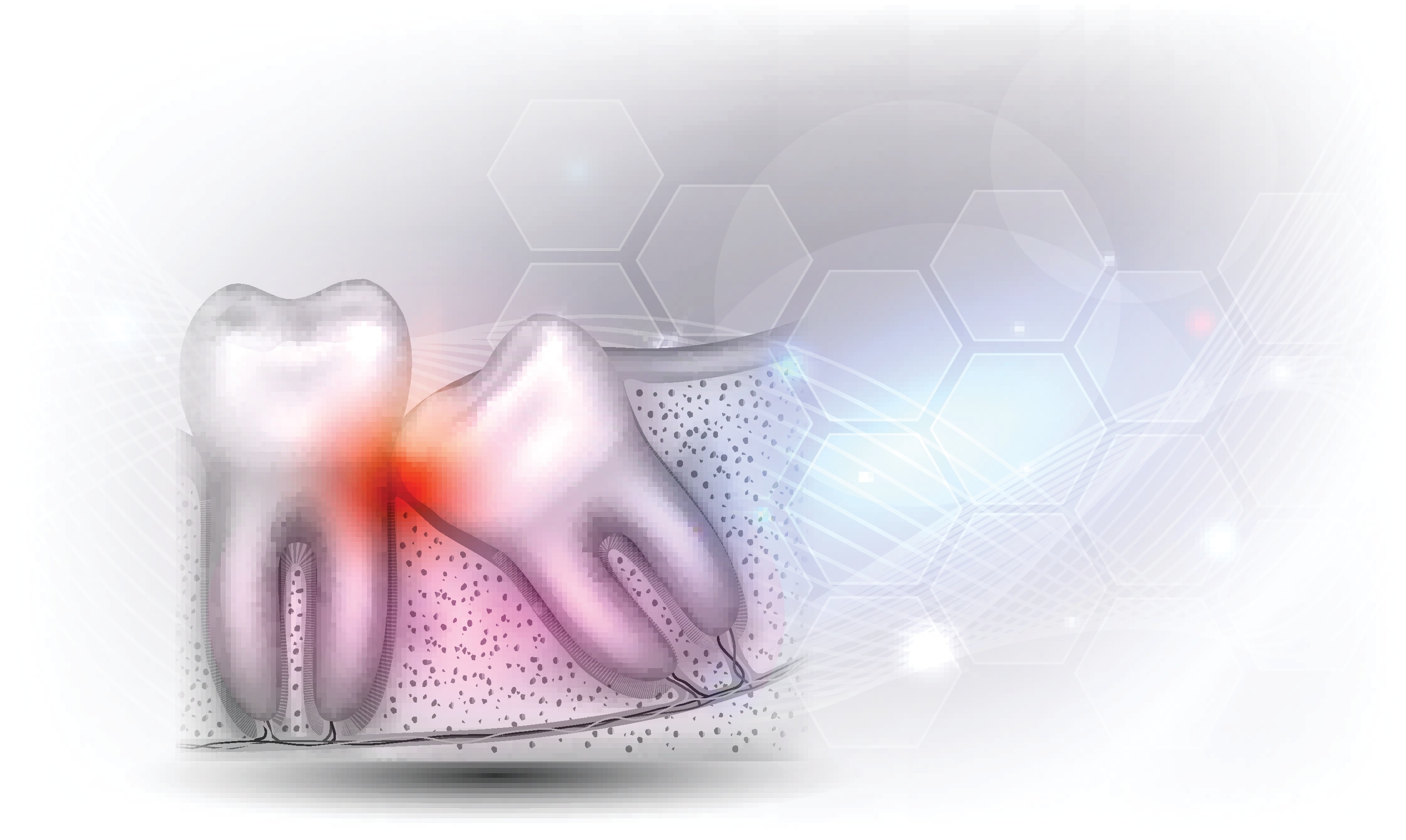Experts think tooth extractions were probably the first dental treatment in human history and the procedure remains very common today with estimates that over 20 million teeth are extracted each year in the United States.
Third molar surgery, or wisdom teeth removal, is the most common oral surgery with more than 10 million being extracted each year.
“Extraction is one of the most performed procedures in oral surgery and its objective is to remove affected teeth with any pathology that compromises the health of the mouth, with third molars being the most frequent,” explains the Journal of Clinical and Experimental Dentistry. “The extraction can be a simple or complex procedure, and this will depend on the factors that affect its removal.”
These tooth extractions help patients deal with current and future issues, but the procedure can come with a risk of minor and major complications.
“With surgical procedures in general, complications can always arise. The reported frequencies of complications after third molar removal are reported between 2.6 percent and 30.9 percent,” reports the publication Oral Health.
Tooth Extraction: Minor vs. Major Complications
As can be expected, minor complications from tooth extractions include post-surgery discomforts such as pain and inflammation. There are major, and more serious, complications that can arise, too.
Oral Health defines the difference between minor complications and major complications from tooth extraction as:
- Minor complications are generally defined as complications that can recover without any further treatment.
- Major complications can be defined as complications that need further treatment and may result in irreversible consequences.
“The spectrum of complications ranges from minor expected [consequences] of postoperative pain and swelling, to permanent nerve damage, mandibular fractures, and life threatening infections,” says Oral Health.
Understanding the difference between the minor complications and major complications will help you know the difference between “what is routine” post-surgery and what issues you need to bring to the attention of your oral surgeon.
Minor Complications from Tooth Extraction
The Mayo Clinic says to expect some degree of pain and discomfort after a tooth extract, but that patients should be able to manage normal pain with a pain reliever prescribed by their dentist or oral surgeon, and that the pain should lessen with time.
“Some pain, swelling, and bruising in the area can be expected for most patients, which will subside with time,” writes Yolanda Smith for News Medical. “Anti-inflammatory and analgesic medications can help to manage these symptoms in the meantime.”
So, it is routine to expect the following minor complications after tooth extraction:
- Pain
- Inflammation
- Bruising
- Bleeding
Bleeding is a complication that is typically minor but can also, in rare circumstances, be a sign of a major complication.
Bleeding Should Not Last Beyond 8 to 12 Hours
When it comes to bleeding, the Cochrane Database of Systematic Reviews says it is normal for the area to bleed and then clot, generally within a few minutes.
“It is abnormal if the bleeding continues without clot formation or lasts beyond 8 to 12 hours; this is known as post-extraction bleeding (PEB),” says the Cochrane Database of Systematic Reviews article. “If post‐extraction bleeding is not managed, complications can range from soft tissue hematomas to severe blood loss. Local causes of bleeding include soft tissue and bone bleeding. Systemic causes include platelet problems, coagulation disorders or excessive fibrinolysis, and inherited or acquired problems (medication induced).”
To differentiate between normal bleeding after tooth extraction and PEB, the definition of PEB can be:
- Bleeding that continues beyond 12 hours of surgery
- Bleeding that causes the patient to contact or return to the oral surgeon; or to go to urgent care or to the ER
- Bleeding that results in the development of a large hematoma (collection of blood below the skin) or ecchymosis (discoloration of the skin resulting from bleeding underneath) within the oral soft tissues
- Bleeding that requires a blood transfusion and/or hospitalization
In the case of PEB, the interventions can be surgical, such as suturing the extraction or bleeding site, or non-surgical measures such as using sealants, adhesives, and other agents to stem the bleeding.
Risk of Infection After Tooth Extraction
According to a Cochrane Review of randomized controlled trials, the risk of postoperative infection after a third molar extraction in young patients who are physically fit is approximately 10 percent. However, the risk is increased up to 25 percent in patients with a low immune system prior to the extraction.
Another study highlighted by the International Journal of Dentistry, which examined patients who underwent tooth extractions at the International Medical University's Oral Health Centre (IMU-OHC) over a span of 6 years found only 1.4 percent experienced post-surgery infections.
Decisions, The Journal of Multidisciplinary Care in Dentistry, says that postoperative wound infection will generally occur in relatively proximity to the tooth extraction site, sometimes with yellow or white discharge, anywhere from three to seven days after surgery.
“These infections may be localized and managed with antibiotics and incision and drainage, or they may progress (often quite rapidly) to a deep space infection requiring hospitalization and treatment in a hospital setting,” wrote Dean M. DeLuke, DDS, in the Decisions article.
Colgate says that some signs of an infection in the mouth include:
- Bad breath
- Sour or bitter taste
- Fever
- Sensitivity to hot and cold
- Swelling or tenderness in the gums, neck, or jaw
“The key is to report any symptoms of complications early, so you can treat the issue right away and decrease the chances of developing anything further,” says Colgate.
Another type of infection after a tooth extraction, which is rare but can be serious, is osteomyelitis, which is an infection of the bone.
“Osteomyelitis can occur in the mouth when the open wound created from an extraction becomes contaminated, and the infection spreads to the underlying bone,” says Colgate.
Dry Socket: Painful Complication from Tooth Extraction
A more common complication after tooth extraction than infection is dry socket, also known as alveolar osteitis, which in itself can lead to infection.
After a tooth extraction, a blood clot usually forms at the site to heal and protect it. In dry socket, this blood clot dislodges, dissolves too early, or never forms in the first place – leaving the bone, tissue and nerve endings unprotected and exposed.
“Dry socket is painful. Food particles or debris can get stuck down in the extraction site. This can delay the healing process or lead to infection,” says Healthline.
The Mayo Clinic says these are the signs and symptoms of dry socket:
- Severe pain within a few days after a tooth extraction
- Partial or total loss of the blood clot at the tooth extraction site, which you may notice as an empty-looking (dry) socket
- Visible bone in the socket
- Pain that radiates from the socket to your ear, eye, temple, or neck on the same side of your face as the extraction
- Bad breath or a foul odor coming from your mouth
- Unpleasant taste in your mouth
Other Tooth Extraction Complications
Some of the other tooth extraction complications to watch out for include:
- Nerve damage: Permanent inferior alveolar or lingual nerve damages is extremely rare but can be serious. Called paresthesia, this can lead to altered sensation of the skin, including numbness, partial loss of local sensitivity, burning, or tingling.
- Mandibular fracture: Immediate or late fracture of the mandible is a rare event, but a major complication.
- Improper teeth alignment: After an extraction, teeth may shift leading to misalignment.
- Bite collapse: Sometimes when several back teeth have been extracted, the collapse of the bite may occur.
- Maxillary sinus exposure: This occurs when a hole that opens into the maxillary sinus needs to be repaired.
- Wound dehiscence: Dehiscence is a partial or total separation of previously approximated wound edges, due to a failure of proper wound healing. This typically occurs 5 to 8 days following surgery when healing is still in the early stages. The causes can include ischemia, infection, increased abdominal pressure, diabetes, malnutrition, smoking, and obesity.
Northwest Oral & Maxillofacial Surgery has the right team, training, expertise, and experience for the most complicated of tooth extraction situations. Call us to find out more and set up an appointment for an evaluation. Don't risk your oral health with general services not equipped for the unique challenges that come with advanced tooth extraction needs and related complication risks.







